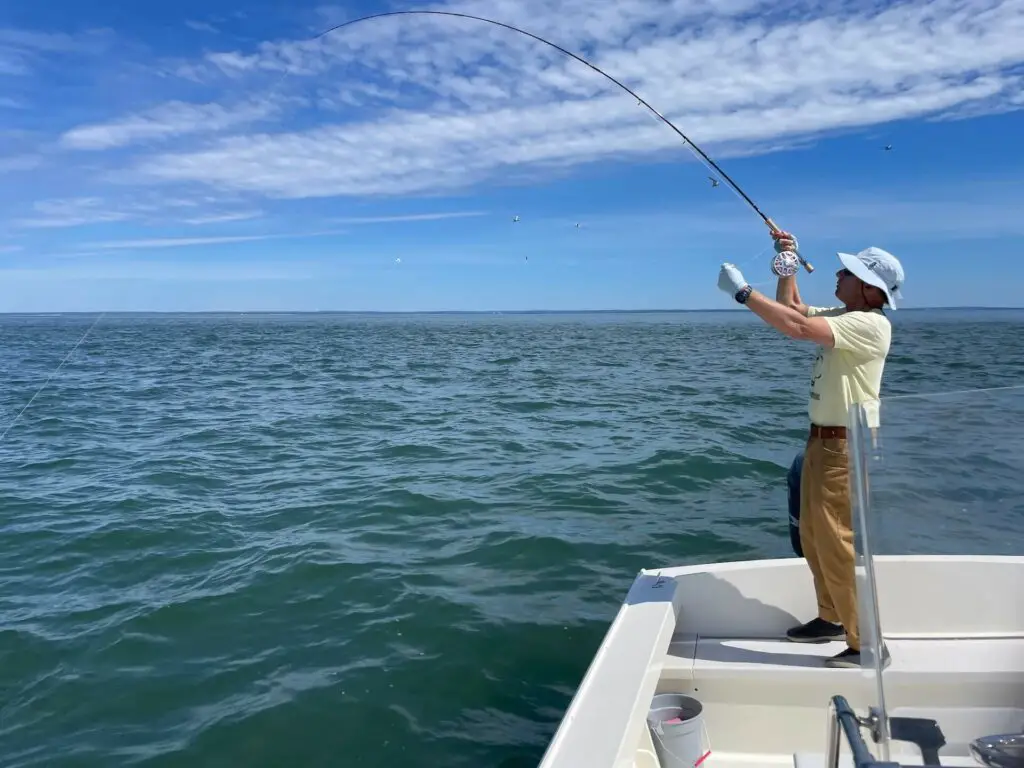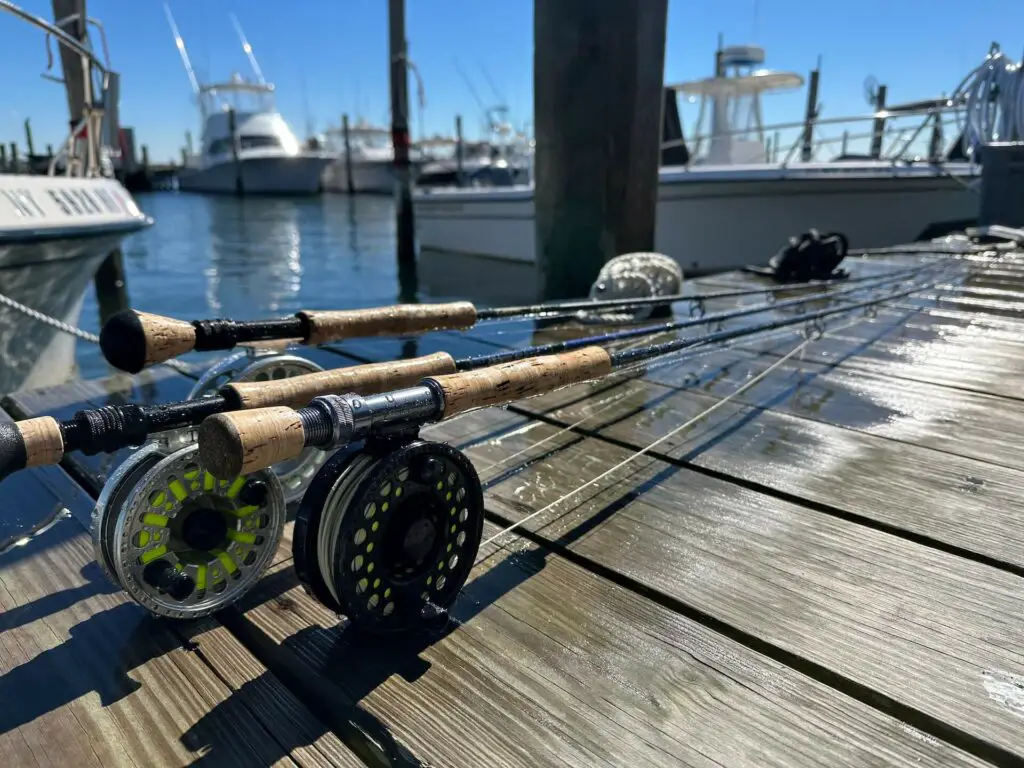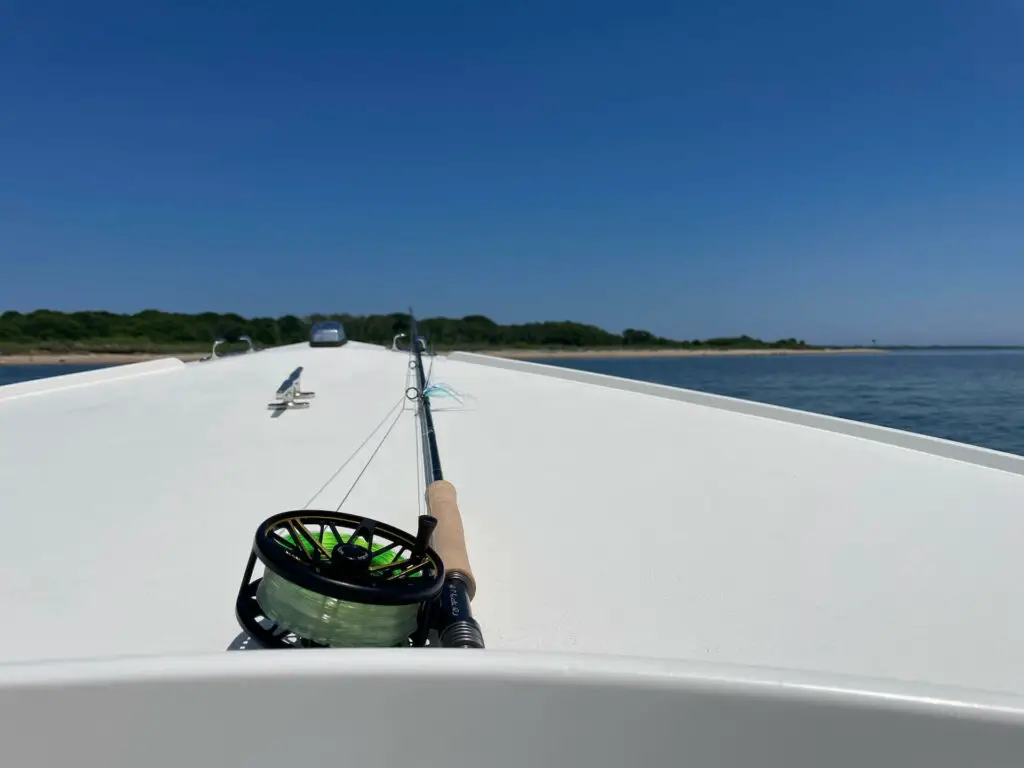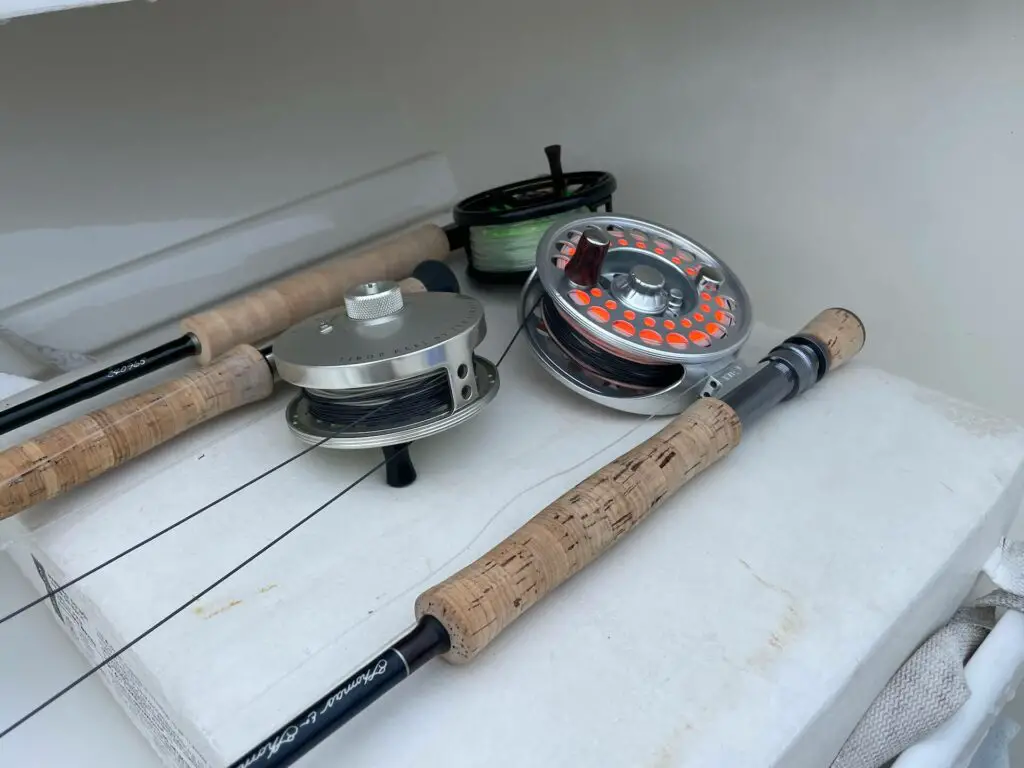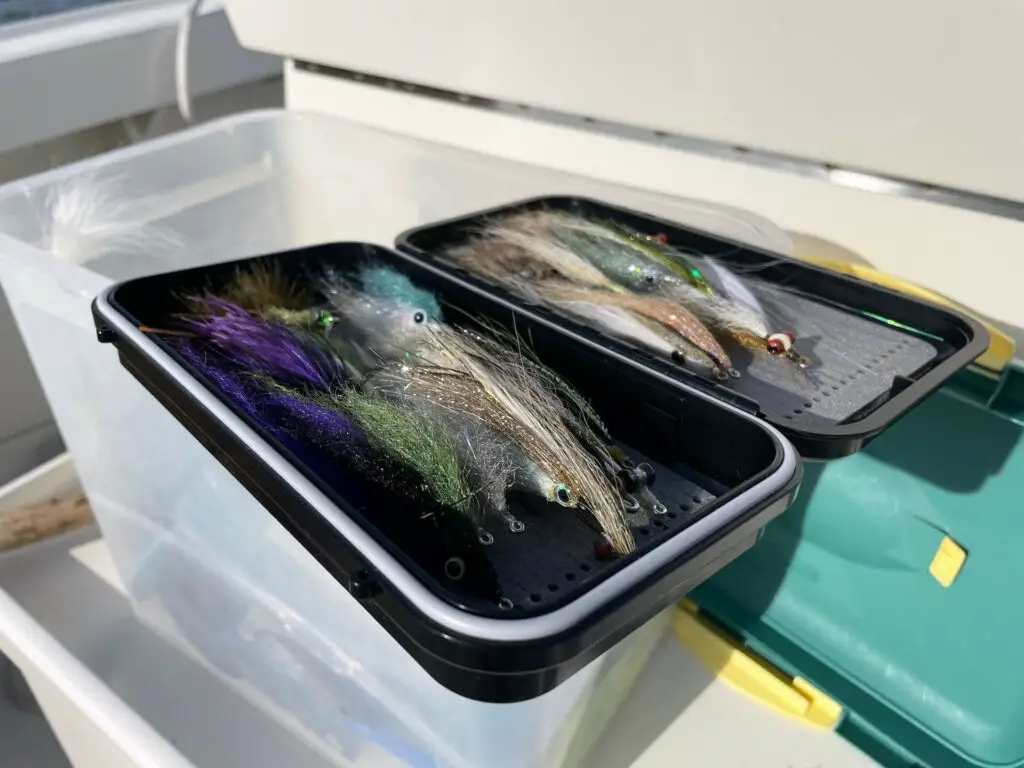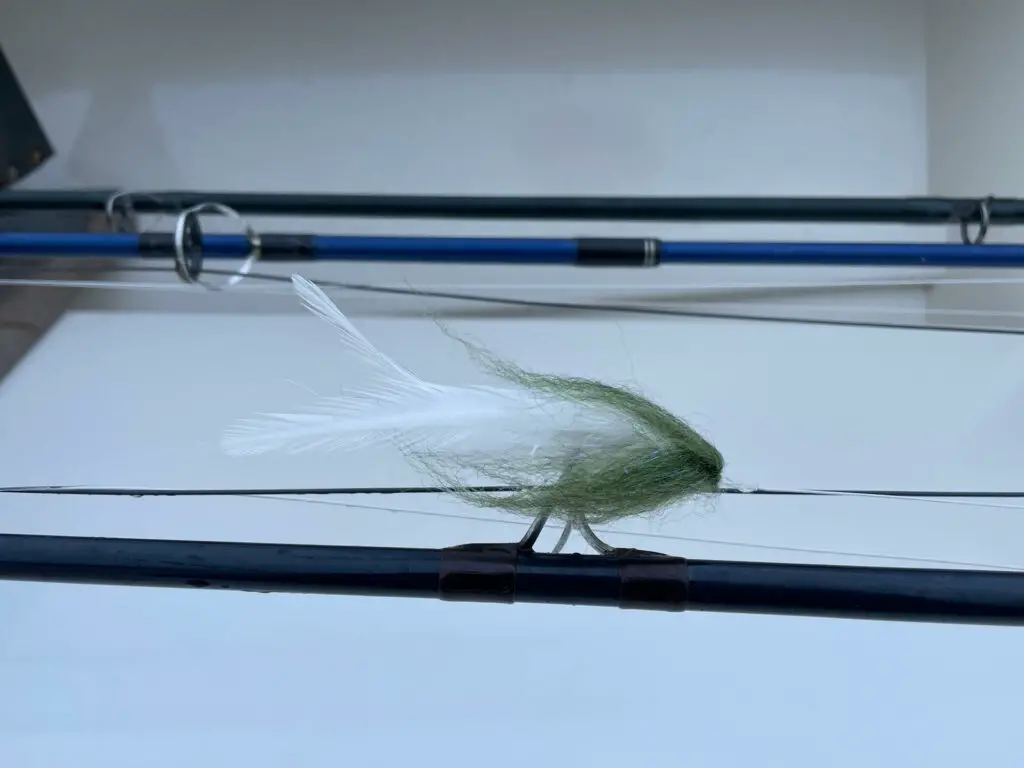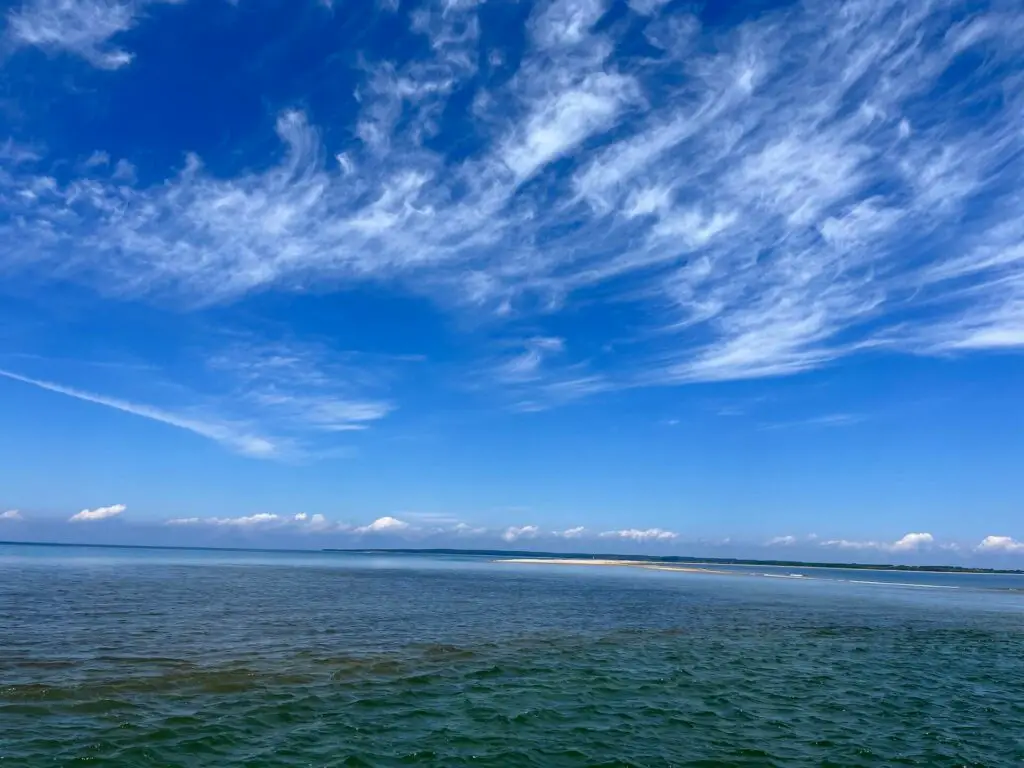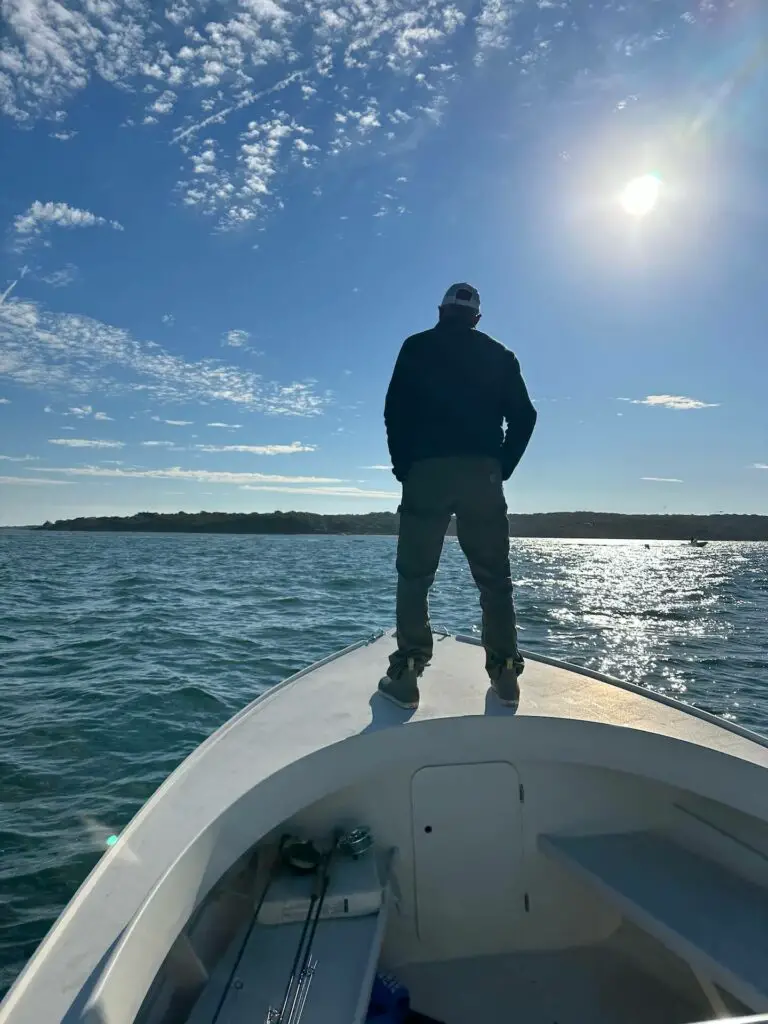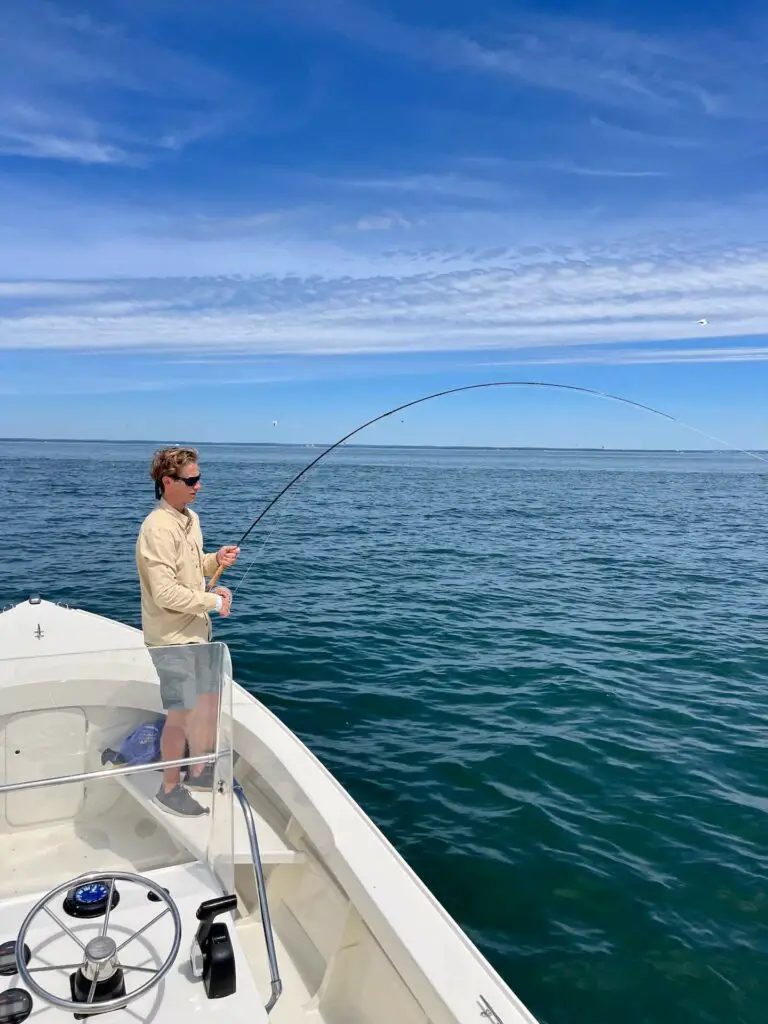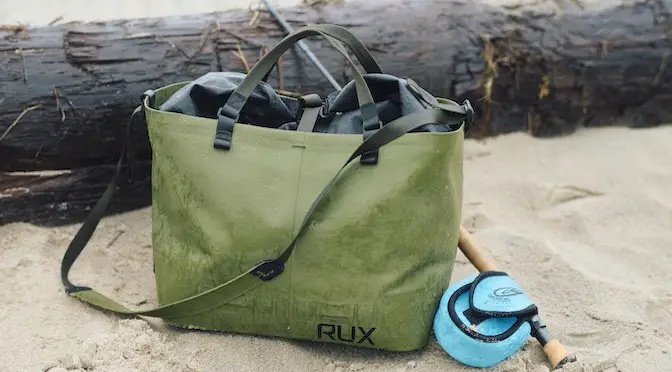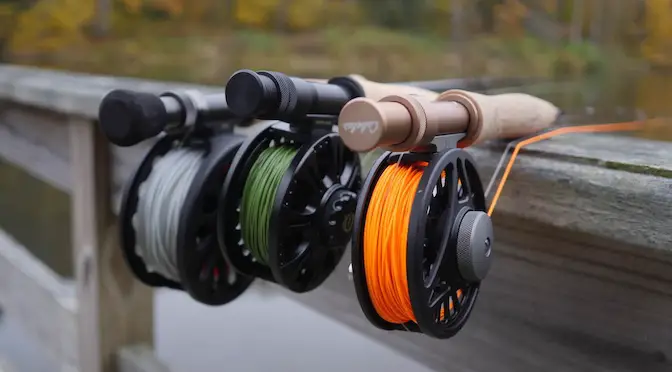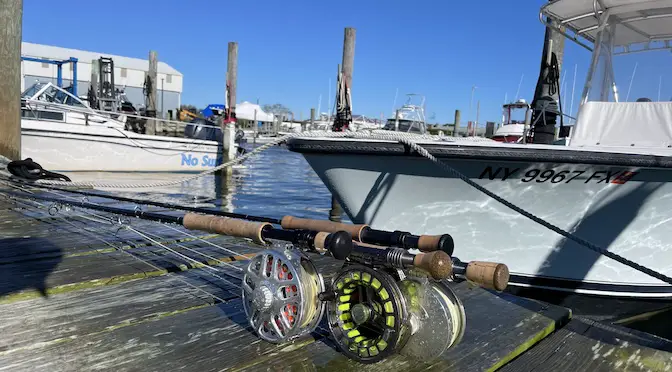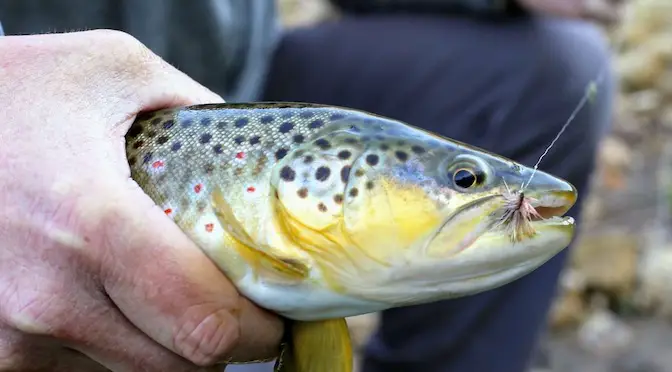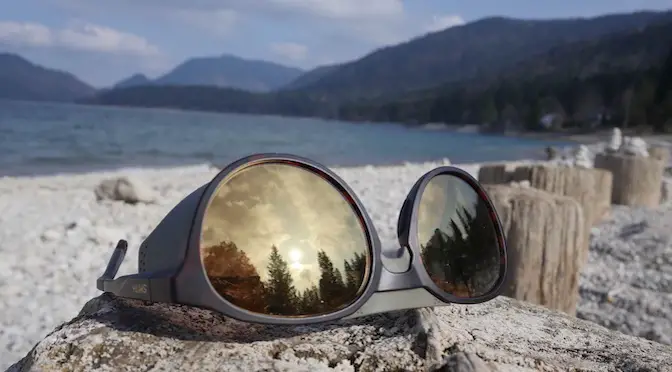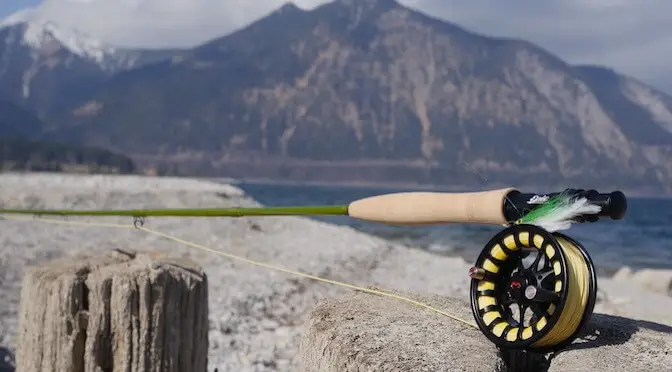Last updated on June 1st, 2023.
- Weatherproof Versatilty: Hands on with the Rux Waterproof Bag - April 3, 2024
- Fly Reel Sizes Explained: A Comprehensive Guide - April 2, 2024
- Fly Rod Weights Explained: A Beginner’s Guide - March 28, 2024
Fly fishing for striped bass is a thrilling and rewarding experience.
To make the most of your time on the water, you need to be prepared with the right gear and techniques. From fly rods and reels to selecting flies, lines, leaders, and strategies – all play an important role in catching these hard-fighting fish. In this article we’ll discuss everything from equipment selection to tactics that will help you catch more striped bass when fly fishing!
Table of Contents:
The Fascination of Striper Fly Fishing
Fly Rods and Reels for Striped Bass
Fly Lines and Leaders for Striped Bass Fishing
Strategies for Shallow Water and Deep Water Fishing for Striped Bass
The Fascination of Fly Fishing for Striped Bass
Fly fishing for stripers is a popular and rewarding activity that is gaining more and more fans. It’s an exciting way to enjoy the outdoors, hone your skills as an angler, and get up close with some of the most impressive fish in the sea.
For many fly fishermen, there is something special about casting a line into the water and feeling that tug on their line when they hook a big one. The thrill of landing a trophy-sized striped bass can be exhilarating!
But before you cast off into the unknown depths of saltwater fishing, it’s important to understand what makes this type of fishing so unique.
Disclaimer: All products in this guide are independently researched by our team. We only recommend products we believe in and never get paid for the reviews. Learn more about our review process here. We use affiliate marketing in this article. This means that if you click on one of the links to a product and end up making a purchase, we might earn a small commission at no extra cost to you.
Fly Rods and Reels for Striped Bass
Fly rods and reels are essential for successful striped bass fishing. The right combination of rod, reel, and line weight can make a huge difference in your success rate. When selecting the best fly rod and reel for striped bass fishing, there are several factors to consider.
Rods
When choosing a fly rod for striped bass fishing, it is important to select one that is lightweight yet powerful enough to handle large fish. A 9-foot 7weight, 8 weight or 9 weight rod is ideal as it provides plenty of power while still being light enough to cast accurately. For anglers who prefer longer casts or larger flies, even 10-weight may be more suitable. Popular models include the new Sage R8 Salt, the Winston Air Salt and Douglas Sky G – all of which offer excellent performance. If you’re looking for great value for money rods, make sure to check out the Redington Predator or the Echo Boost.
Reels
The next step in setting up your gear is selecting a reel that will match your chosen rod size and line weight requirements. Most manufacturers offer reels designed specifically for each model of their rods. Make sure your fly reel is saltwater proof. If you’re looking for premium reels for striper fishing, take a look at the Abel Rove, Nautilus CCF or the Tibor. If you’re looking for intermediate saltwater fly reels for striper fishing, check out the Redington Grande or the Galvan Torque.
Key Takeaway: Fly fishing for striped bass requires the right combination of rod, reel, and line weight. A 9-foot 5-weight or 6-weight rod is ideal with a matching reel from the same manufacturer or a universal option such as the Ross Evolution R Salt Water Reel or Redington Behemoth Reel.
Best Flies for Striped Bass
Topwater Flies: When fishing for striped bass, topwater flies can be very effective. These include poppers, sliders, and baits that create a disturbance on the surface of the water to attract fish. Poppers are great for targeting larger stripers in shallow waters as they make a loud popping sound when retrieved across the surface. Sliders are more subtle than poppers and can be used to target smaller stripers in calmer waters or during low light conditions.
Subsurface Flies: Subsurface flies are designed to imitate baitfish or other prey species that live below the surface of the water column. Clouser Minnows, Deceivers, and Lefty’s Deceiver patterns are all popular choices when targeting striped bass with subsurface flies. Streamer patterns such as Woolly Buggers and Muddler Minnows can also be effective at times depending on what type of food sources the fish are feeding on at any given time.
Key Takeaway: When fishing for striped bass, topwater flies such as poppers and sliders, as well as subsurface flies like Clouser Minnows and Woolly Buggers can be effective.
Fly Lines and Leaders for Striped Bass Fishing
Floating lines and intermediates are the most common type of fly line used when fishing for striped bass. They allow you to present your flies on or near the surface, and they also provide good control over long casts. When selecting a floating line for striped bass, look for one that is designed specifically for saltwater use and has an intermediate sink rate (1-2 ips). This will help ensure that your flies stay in the strike zone longer. Additionally, make sure to choose a line with a weight rating that matches your rod’s specifications.
Sinking Lines: Sinking lines can be very effective when fishing deeper water or targeting fish holding at greater depths. These lines come in various sink rates ranging from slow sinking (3-4 ips) to fast sinking (7+ ips). The slower sinking lines are best suited for shallow water applications while faster sinking lines should be used when fishing deeper areas such as channels or drop offs. As with floating lines, make sure to select a weight rating that matches your rod’s specifications.
Leader length is an important factor in successful fly fishing presentations; too short of a leader can cause poor casting accuracy while too long of one can inhibit hook sets and drag down the presentation of lighter weighted flies. For striped bass, leaders between 9-12 feet are typically recommended depending on conditions such as wind speed/direction and current strength/direction. In terms of material selection, fluorocarbon is generally considered superior due to its low visibility underwater which helps prevent spooking wary fish species like stripers from detecting it before striking the fly itself.
Key Takeaway: When fishing for striped bass, the right fly line and leader length are essential. Use a floating line with an intermediate sink rate (1-2 ips) that matches your rod’s weight rating, and select a fluorocarbon leader between 9-12 feet in length.
Strategies for Shallow Water and Deep Water Striper Fly Fishing
When fishing in shallow water for striped bass, the key is to present your lure or fly in a way that will entice them to strike. One of the most effective techniques is to cast parallel to shore and use a slow retrieve with pauses. This allows you to cover more water and keep your bait in the strike zone longer. It also gives you time to adjust your presentation if needed. Topwater lures such as poppers are great choices when fishing shallow waters since they can be easily seen by fish near the surface. Subsurface flies like streamers can also be effective when fished slowly along bottom structure such as rocks or weeds.
Deep Water Tactics: Fishing deep waters for striped bass requires different tactics than those used in shallow water environments. The key here is getting your lure or fly down into their preferred depth range quickly so they have time to inspect it before it moves out of their territory again. Heavier streamers on sinking lines are often used when targeting deeper depths. Streamers and bucktails are popular choices for subsurface presentations while topwater lures may not work as well due to limited visibility at greater depths. Long leaders should be used when presenting baits/flies near structure so that you don’t get snagged up too often; however, shorter leaders may still produce strikes from aggressive fish looking for an easy meal.
Key Takeaway: Key takeaway: To successfully target striped bass in shallow and deep water environments, use a variety of techniques such as casting parallel to shore with slow retrieves, trolling crankbaits, and presenting topwater or subsurface luresflies. Use heavier jigs for deeper depths and long leaders near structure.
Conclusion
With the right gear, knowledge of the best flies, fly lines and leaders, and strategies for shallow water or deep water fishing you can be sure to have a successful day on the water. Whether you’re just starting out or looking to improve your technique, fly fishing for striped bass is an enjoyable experience that will leave you wanting more!
Fly fishing for stripers is a challenging but rewarding activity that can be enjoyed by anglers of all skill levels. It requires knowledge, patience and practice to perfect the technique needed to land these magnificent fish. Now more than ever we need to come together as an angling community in order to preserve this precious resource for generations of future fishermen and women alike. Join us today in taking action towards conserving our rivers, streams and lakes so that everyone can experience the thrill of striped bass fly fishing!
FAQs in Relation to Fly Fishing for Striped Bass
What size fly reel for striped bass?
When it comes to choosing the right size fly reel for striped bass, a 5/6 weight reel is ideal. This size will provide enough backing capacity and line retrieval rate to handle the power of larger stripers while still being light enough for smaller fish. Look for reels with an arbor diameter of 3-4 inches and a spool width of 1 inch or more. Also consider features such as drag systems, construction materials, ergonomics, and aesthetics when selecting your reel. With these considerations in mind you can find the perfect fly reel that will help you land your next striper.
What size fly hook for striped bass?
The size of fly hook for striped bass will depend on the type of bait being used. Generally, a 2/0 to 4/0 hook is recommended when using natural baits such as shrimp or sand eels. If you are using artificial lures like poppers or streamers, then a 1/0 to 3/0 hook should be sufficient. It’s important to remember that larger hooks can damage the fish and make it difficult to release them safely, so always err on the side of caution when selecting your hook size.
What fly rod weight for stripers?
When it comes to fly fishing for stripers, the ideal rod weight is typically between 8 and 10wt. This heavier weight provides enough power to cast larger flies and heavy lines, while still allowing for delicate presentations when needed. It also allows anglers to fight bigger fish with more confidence. A 9wt is often seen as a good all-around choice that will work in most situations. However, depending on the size of your target species and water conditions, you may want to adjust accordingly by going up or down a few weights. Ultimately, finding the right balance of power and finesse is key for successful striper fishing.
What month is best for striper fly fishing?
The best month for striper fishing is typically May through September. During this time, the water temperature is ideal for striped bass to feed and be active. Additionally, many areas offer excellent access to prime fishing spots during these months. The warmer weather also makes it more comfortable and enjoyable for anglers to spend long days on the water. It’s important to note that local conditions can vary greatly from year-to-year, so it’s always a good idea to do some research before heading out on your next trip.

